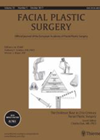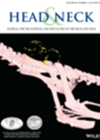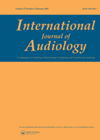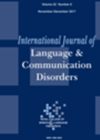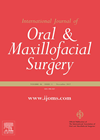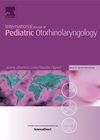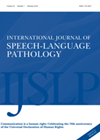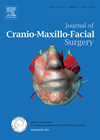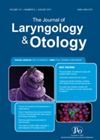
Journal Reviews archive for 2018
The double-half bilobed flap or traditional bilobed flap: which is better?
Reconstruction of the nasal tip following ablative surgery can be taxing. The nasal tip is a very visible area with largely immovable skin and reconstruction needs an appreciation of the various subunits to achieve best results. The traditional superiorly based...
The newest robot from da Vinci – what can it offer for hypopharyngeal cancer surgery?
The standard existing da Vinci surgical robot (the Si model) has been much maligned for not being optimally designed for transoral access and endoscopic manoeuvrability in head and neck surgery. This preclinical work from Holsinger and his team looks at...
How to talk about hearing aid costs?
Money is always a controversial topic if discussed in reference to healthcare. This study raises the interesting topic of difficulties when it comes to discussing the costs of hearing aids with customers. Sixty-two audiological appointments were recorded and discussions concerning...
Static positional nystagmus
This study aimed to clarify the interpretation of positional nystagmus (PN) by looking at the current criteria for significance of PN, comparison of PN in symptomatic patients with normative data, prevalence of PN among participants with balance problems and assessing...
Developmental language disorder
Disorders such as attention deficit disorder (ADHD), autism spectrum disorder and developmental dyslexia have received widespread recognition. As a result, children affected by these conditions are able to receive remedial services. In this article, the author discusses the possible reasons...
Obstructive sleep apnoea: Does maxillomandibular advancement work?
This is a paper from the Netherlands reviewing 62 patients who underwent maxillomandibular advancement for moderate to severe obstructive sleep apnoea. The authors observed a 71% success rate with mean apnoea hypopnea index (AHI) reduction of 69%. There was no...
Cinch suture: Does it work?
Flaring of the nostrils is a common side-effect of a maxillary osteotomy. At times flaring is minimal or of no significance. In some instances, it can be a significant postoperative concern to the patient, even to the extent of declining...
CT-scan instead of rigid bronchoscopy in paediatric foreign body aspiration?
Many centres would still use rigid bronchoscopy as the gold standard for possible foreign body aspiration (FBA) in children. Evidence is growing that CT scanning in these situations is a reliable alternative, especially as rigid bronchoscopy (RB) still carries a...
More difficult than meets the eye: learning to use communication skills
People with communication difficulties are more at risk of accidents and mistreatments than others. Addressing the skills of the communication partners (the medical professionals) is one way of tackling this issue. This study describes innovations in training for fourth year...
Can the threshold for drain removal after selective lateral neck dissection be safely raised to an output volume of less than 100 mL in a 24-hour period?
Closed-suction drains are routinely used by most head and neck surgeons after selective lateral neck dissections (SLNDs). A recent survey of more than 360 head and neck surgeons found that more than 60% use a criterion of less than 30...
Risk factors for loco regional recurrence for oral SCC
Over 250,000 cases of oral squamous cell carcinomas are diagnosed annually worldwide with 128,000 registered deaths. The authors of this study are from a single institution in Germany and have conducted a retrospective audit of 517 patients with oral SCC...
Modern surgical treatment for obstructive sleep apnoea indicate suppression of inflammatory cytokines
This study comprises 57 patients, 29 of which were treated by anterior palatoplasty procedure, expansion sphincter pharyngoplasty and submucosal minimal invasive lingual excision techniques and 27 by CPAP therapy. Parameters to determine success were AHI, VAS score, ESS score, mean...

